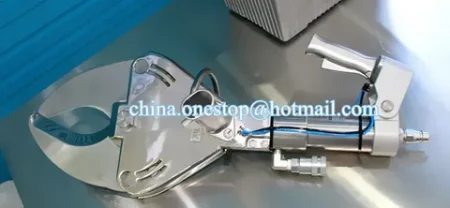Creating a successful livestock operation depends heavily on the infrastructure systems that support daily operations and animal welfare. Modern livestock facilities require careful consideration of multiple interconnected components that affect everything from animal health to operational efficiency.
The complexity of these systems has grown with advances in technology and changing industry standards that emphasize sustainability and productivity. Understanding what each infrastructure element contributes to your operation helps in making informed decisions about priorities, timing, and resource allocation for both new operations and facility upgrades.
Feed Storage Requirements
Feed storage facilities must protect valuable nutrition from moisture, pests, and contamination while maintaining easy access for daily feeding operations. The size and type of storage depend on your herd size, feeding schedule, and local climate conditions that affect feed quality over time.
Ventilation systems within storage areas prevent condensation buildup that can lead to mold growth and spoilage of expensive feed ingredients. Temperature control becomes particularly important in regions with extreme seasonal variations that can degrade feed nutritional value.
Fencing Systems
Fencing serves multiple purposes beyond simple containment, including predator protection, pasture rotation management, and establishing clear boundaries for different animal groups. Material selection depends on your specific livestock type, local predator threats, and terrain characteristics that affect installation and maintenance requirements.
Height, spacing, and tensioning specifications vary significantly between cattle, sheep, goats, and other livestock species based on their natural behaviors and physical capabilities. Regular maintenance schedules become necessary to address weather damage, animal impact, and general wear that can compromise fence integrity over time.
Water Storage Solutions
Reliable water storage systems form the backbone of livestock health and production, with different tank sizes serving various operational needs throughout your property. Vertical storage tanks offer space-efficient solutions for areas with limited ground space while providing adequate capacity for medium-sized herds during peak consumption periods.
The 1000-gallon vertical water tank, found in companies like USA Tank, represents a popular choice for many operations, offering substantial storage capacity while maintaining a relatively compact footprint for installation flexibility. Materials like polyethylene, fiberglass, and stainless steel each offer different advantages in terms of durability, cost, and maintenance requirements for long-term reliability.
Shelter and Housing
Livestock housing requirements vary dramatically based on species, climate, and production goals, with each design affecting animal comfort and operational efficiency. Natural ventilation systems reduce respiratory issues, while artificial lighting can influence reproductive cycles and feeding behaviors in many species.
Flooring materials impact animal health, with options ranging from dirt and sand to concrete and rubber mats, depending on your specific needs and budget constraints. Proper sizing allows animals adequate space for natural behaviors while facilitating efficient cleaning and maintenance routines.
Modern Monitoring System
Remote monitoring systems have revolutionized livestock management by providing real-time data on various aspects of animal health and facility conditions. Tank level monitoring technology allows operators to track water consumption patterns and receive alerts when refilling becomes necessary, preventing potentially dangerous shortages.
A remote tank level monitor can typically connect through satellite, sending notifications directly to smartphones or computers for immediate response capability. Data logging features help identify trends in water usage that can indicate health issues or equipment problems before they become serious concerns.
Waste Management System
Effective waste management protects both environmental resources and animal health while potentially creating valuable byproducts for crop production or energy generation. Proper drainage and collection systems prevent contamination of water sources and reduce odor issues that can affect neighboring properties.
Storage capacity must accommodate seasonal variations in waste production and weather conditions that affect decomposition rates. Treatment options range from simple composting systems to more complex anaerobic digesters that can generate biogas for on-farm energy needs.
Equipment and Machinery Storage
Protecting valuable equipment from weather exposure significantly extends operational lifespan and reduces maintenance costs over time. Storage buildings need adequate ventilation to prevent condensation damage while providing security from theft and vandalism. Electrical systems within storage areas support battery charging, equipment maintenance, and lighting for safe operation during early morning or evening hours.
Organization systems help maintain equipment readiness and reduce time spent searching for tools and supplies during busy periods.
Electrical and Power Infrastructure
Reliable electrical systems power essential equipment, including water pumps, lighting, ventilation fans, and automated feeding systems that make modern livestock operations possible. Backup power generation becomes critical during outages that can threaten animal welfare and production continuity.
Electrical distribution throughout the property requires proper planning to accommodate both current needs and future expansion possibilities. Safety considerations include proper grounding, circuit protection, and weather-resistant installations that can withstand harsh agricultural environments.
Veterinary and Health Management Facilities
Dedicated spaces for animal health management allow for proper isolation of sick animals and safe administration of treatments and vaccinations. These facilities need adequate lighting, ventilation, and easy-to-clean surfaces that maintain sanitary conditions during medical procedures.
Quarantine areas become essential for introducing new animals to your herd without risking disease transmission to existing livestock. Storage for medical supplies, vaccines, and treatment equipment requires temperature control and security to maintain effectiveness and prevent unauthorized access.
Loading and Handling Infrastructure
Proper loading chutes and handling systems reduce stress on animals during transport while protecting both livestock and handlers from injury. These structures need sturdy construction to withstand the physical forces generated by large animals in confined spaces.
Non-slip surfaces and curved designs work with natural animal behavior patterns to encourage smooth movement through the system. Strategic placement near main access roads minimizes transport distances and reduces disruption to daily operations.
Security and Access Control Systems
Physical security measures protect valuable livestock and equipment from theft while controlling access to sensitive areas of your operation. Lighting systems deter unwanted visitors and provide safety for workers during early morning or evening tasks.
Gate locks, cameras, and perimeter barriers create multiple layers of protection that adapt to your specific security concerns and budget constraints. Emergency contact systems allow workers to quickly summon help during accidents or security incidents.
Communication and Connectivity Solutions
Reliable communication systems become critical for coordinating daily operations, emergency response, and staying connected with veterinarians and suppliers. Cell phone boosters and wireless internet extend connectivity to remote areas of large properties where standard service may be weak or unavailable.
Two-way radio systems provide immediate communication between workers in different areas of the operation during routine tasks and emergencies. Weather monitoring equipment helps track local conditions that affect animal comfort and safety decisions.
Building a successful livestock operation requires careful planning and implementation of diverse infrastructure systems that work together to support animal health, operational efficiency, and long-term sustainability. Each component plays a vital role in creating an environment where livestock can thrive while making daily management tasks safer and more efficient for operators.
The initial investment in quality infrastructure pays dividends through reduced labor costs, improved animal performance, and fewer emergency repairs over the life of your operation. Modern technology integration with traditional agricultural practices creates opportunities for better monitoring, data collection, and decision-making that can improve both profitability and animal welfare in sustainable livestock operations.










